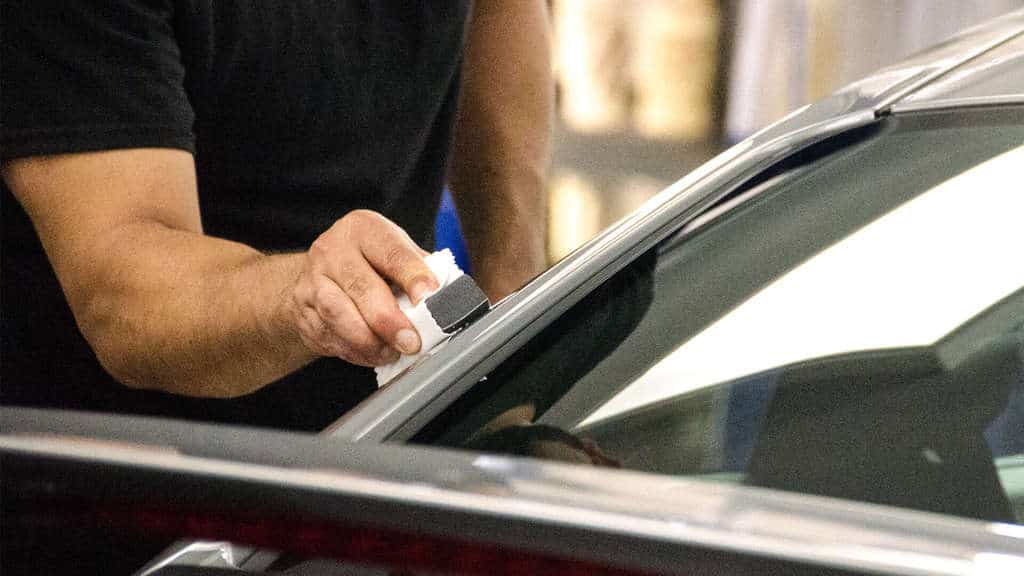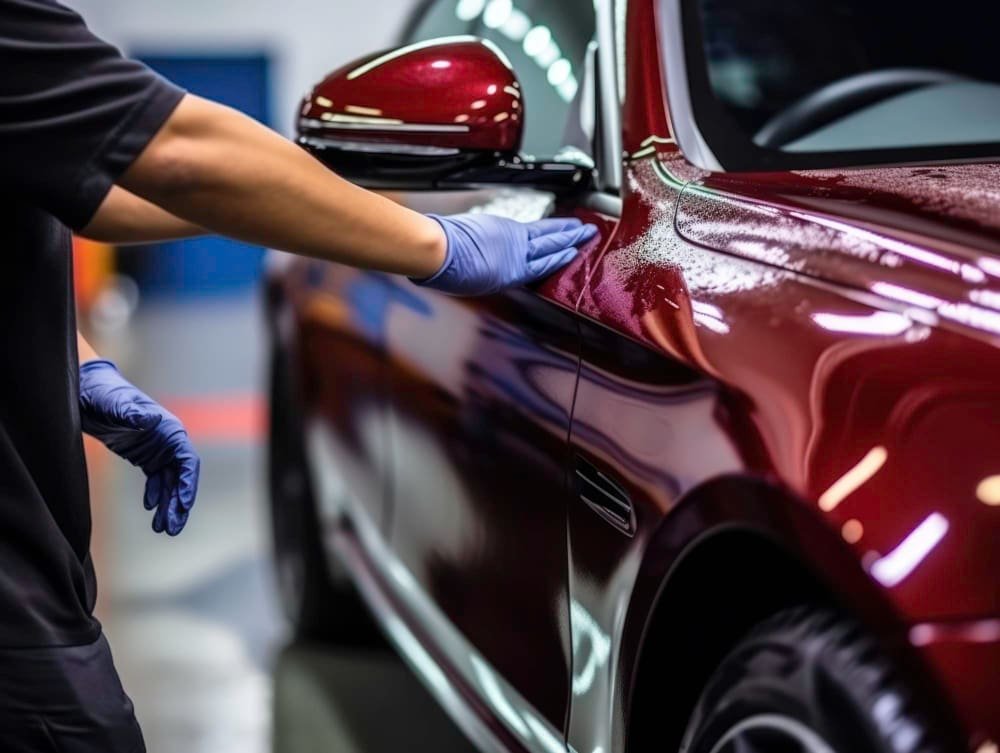Expert Tips for Keeping Your Vehicle After Applying Ceramic Coatings
Expert Tips for Keeping Your Vehicle After Applying Ceramic Coatings
Blog Article
How Ceramic Coating Boosts the Long Life of Your Car's Complete
Ceramic coating has actually arised as a pivotal innovation in auto treatment, supplying a considerable enhancement to the durability of an automobile's finish. By producing a robust, semi-permanent bond with the manufacturing facility paint, ceramic coatings offer an awesome obstacle against ecological threats, consisting of UV rays and chemical pollutants.
What Is Ceramic Coating?
Ceramic coating is a sophisticated protective remedy that boosts the long life and look of automobile surfaces. This sophisticated innovation includes the application of a fluid polymer that chemically bonds with the manufacturing facility paint, developing a durable layer of defense. Unlike traditional wax or sealers, which offer only momentary advantages, ceramic layers use durable strength against ecological contaminants and physical wear.
The primary element of ceramic finishes is silica, which develops a strong bond with the automobile's surface area. As an outcome, automobiles treated with ceramic coverings keep their aesthetic charm over time.
Application of ceramic coating calls for thorough preparation, consisting of extensive cleansing and decontamination of the car's surface to make certain optimum bond. When applied, the coating remedies to create a semi-permanent guard that can last for numerous years when correctly preserved. This innovative solution stands for a significant improvement in automotive treatment, supplying a superior alternative to standard approaches of surface area protection.
Advantages of Ceramic Coating
Among one of the most substantial advantages of applying ceramic coating to a car is the improved protection it offers against environmental damages. This sophisticated protective layer offers as an awesome obstacle against unsafe components such as UV rays, bird droppings, tree sap, and acid rainfall, which can result in fading, etching, and corrosion of the automobile's paintwork.
Along with safeguarding against ecological hazards, ceramic coating dramatically decreases the regularity of cleaning and detailing. Its hydrophobic buildings ward off water and dust, allowing pollutants to slide off more easily, leading to a cleaner surface for a longer period. This not just saves effort and time but additionally lessens the deterioration related to routine washing.
Furthermore, ceramic coating offers a high-gloss coating that boosts the vehicle's look, giving it a display room beam that lasts. This visual benefit is matched by a boost in resale value, as a well-kept outside commonly translates to a much more appealing deal on the market.
Ultimately, the benefits of ceramic coating prolong beyond plain aesthetics, offering useful remedies for lasting lorry care and conservation.
How Ceramic Coating Functions
At its core, ceramic coating features via a chemical bonding process that integrates with the lorry's factory paint. This cutting-edge coating contains nanoparticles, usually made from silicon dioxide (SiO2), which produce a long lasting and durable layer on the surface of the paint. When applied, the ceramic coating permeates the tiny pores of the lorry's surface, forming a semi-permanent bond that boosts the paint's safety high qualities.
The outcome is an ultra-thin, hydrophobic layer that pushes back water and contaminants, making it harder for dirt, gunk, and other toxic wastes to comply with the surface area. This function not just streamlines upkeep, as cleaning ends up being extra efficient, however likewise reduces the threat of scratches and swirl marks that can mar the finish with time.
In addition, ceramic finishings provide UV protection, securing the paint from unsafe sunlight exposure that can cause oxidation and fading. The chemical composition of the coating guarantees that it stays intact under numerous weather condition conditions, adding to the durability of the lorry's surface. In general, the application of ceramic coating is a proactive action that fortifies and protects the visual appeal of a car for many years to find.
Comparison With Standard Wax
When considering vehicle defense options, contrasting ceramic coverings to typical this article wax exposes substantial distinctions in performance and longevity. Typical wax, while supplying a temporary shine and a layer of protection, commonly lasts just a couple of weeks to a few months, relying on environmental conditions and upkeep practices. In contrast, ceramic coatings offer a much a lot more sturdy option, lasting numerous years with correct care.

Furthermore, ceramic layers provide a self-healing property that can fix small scrapes and swirl marks when revealed to heat. This is a function traditional wax can not provide. On the whole, while wax may be much more budget friendly and much easier to apply, the long-lasting advantages of ceramic coatings make them a remarkable choice for those seeking to protect the integrity and visual allure of their vehicle's surface.
Maintenance Tips for Ceramic Coating
Appropriate maintenance is necessary to ensure the longevity and efficiency of a ceramic coating. To start with, routine cleaning is important; utilize a pH-balanced car hair shampoo and microfiber towels to lessen scraping. Avoid automated auto cleans that use rough brushes, as they can break down the coating with time.

Using a top-up spray or upkeep item created particularly for ceramic layers can assist revitalize the hydrophobic residential properties and boost shine (ceramic coatings). Prevent making use of conventional waxes or sealants, as they might hinder the coating's performance
Lastly, think about periodic specialist evaluations and upkeep by a detailer experienced with ceramic finishes. They can evaluate the condition of the coating and provide specific treatment, more extending its life and ensuring your vehicle continues to be aesthetically appealing for years ahead.
Final Thought
In conclusion, ceramic coating serves as an efficient solution for enhancing the Discover More longevity of an automobile's coating. By creating a durable, semi-permanent bond with the manufacturing facility paint, it gives important protection against environmental factors, consisting of UV rays and pollutants. The hydrophobic homes of ceramic finishes add to next reduced upkeep needs, enabling for a sustained high-gloss appearance. On the whole, the fostering of ceramic coverings stands for a substantial development in automotive treatment, ensuring ideal paint preservation for years.
Ceramic coating has actually emerged as an essential development in automobile treatment, offering a considerable enhancement to the durability of a car's coating. When applied, the ceramic coating permeates the microscopic pores of the vehicle's surface, creating a semi-permanent bond that enhances the paint's safety qualities.
When considering lorry protection choices, comparing ceramic layers to traditional wax discloses significant differences in efficiency and longevity.Ceramic coverings create a strong chemical bond with the vehicle's paint, producing a hydrophobic surface area that pushes back water, dust, and contaminants.In verdict, ceramic coating offers as a reliable remedy for improving the long life of a vehicle's coating.
Report this page